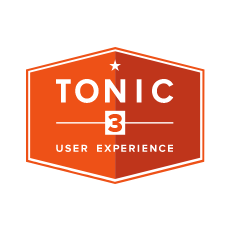Streamline Automated Workflows with HITL Agent Orchestration
Organizations can elevate performance and realize their full ROI on IT investments with seamless integration of human-in-the-loop (HITL) agent...
Tonic3 develops and executes strategies that drive profit through Digital Transformation. Practically that means we are built to help clients hone the right strategy, implement the right technology, and build the right long-term capabilities to deliver lasting transformation.
Industries
We believe that effective technology helps people succeed in their daily lives. So we help our clients engineer useful technology for their clients, partners, and employees. That translates to every major industry, but over the years we’ve developed several core areas of expertise.
3 min read
 Tonic3
:
Aug 1, 2025 10:22:31 AM
Tonic3
:
Aug 1, 2025 10:22:31 AM

Summary: This case study reviews a Level 1 Fraud workflow that was ripe for automation. Bottlenecks, Busywork, and Bottled Potential
Client: A Global Financial Services Firm
Industry: Financial Services, Fraud detection
63% |
$775,000 |
5 Days |
| Increased team capacity | In savings | To complete, hindered by manual processes and back-and-forth internal communications. |

Our client, a global financial services firm, faced significant operational bottlenecks in their Level 1 fraud research team. Analysts were burdened by excessive manual effort and fragmented data sources, spending up to six hours per case navigating multiple, unintegrated systems. This led to:

Recognizing that off-the-shelf AI solutions couldn't address their unique institutional knowledge and processes, our team partnered with the client to implement a custom Human-in-the-Loop (HITL) AI solution. Our approach focused on augmenting human capabilities rather than replacing them, preserving the client's proprietary risk model and expert judgment.
We deployed a multi-agent AI system designed to automate the initial "grunt work" of the Level 1 analysts. This intelligent system:

The implementation of the HITL AI solution delivered immediate and significant operational efficiencies and financial returns:
The client’s Level 1 fraud research team struggled with inefficiency due to manual data collection across multiple unintegrated systems, high false positives from scattered unstructured data, difficulty integrating critical data into their proprietary risk model, and prolonged case cycles averaging 5 days per fraud case.
Off-the-shelf AI solutions lacked the ability to incorporate the client’s unique institutional knowledge and proprietary risk model. The HITL approach augmented human expertise while preserving expert judgment and the client’s “secret sauce,” ensuring tailored, transparent, and trustworthy automation.
The multi-agent AI system automates manual data collection by integrating disparate sources, pre-processes and weights information according to the proprietary risk model, generates pre-assessed reports for Level 1 analysts to review and refine, and provides Level 2 analysts with organized, actionable insights to accelerate decision-making.
The solution reduced manual data research time from 6 hours to 4 minutes per case, cut average case completion time from 5 days to 2 days, lowered operational costs by 46%, increased team capacity by 63%, and delivered an annualized ROI of $775,000 in savings.
No. The HITL AI system is designed to augment human capabilities, automating repetitive and time-consuming tasks while preserving expert judgment. Human analysts remain essential for reviewing AI outputs, refining assessments, and making final decisions.
The system incorporates confidence scores and weights information based on the client’s proprietary risk model, providing analysts with transparent, pre-assessed reports. This approach allows analysts to understand how conclusions were reached and maintain control over final risk assessments.

Organizations can elevate performance and realize their full ROI on IT investments with seamless integration of human-in-the-loop (HITL) agent...

So, you've reached a point where operational KPIs seem to be plateauing? You're seeing customer ticket volumes that just won't budge? It's a common...

Why read this article? Understand Practical AI: Learn what AI automation means for your daily HR tasks, moving beyond the tech buzzwords. Get...